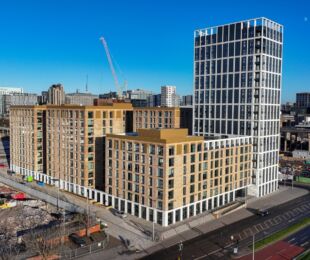
What's not to love about the tapestry of old brickwork that surrounds the existing courtyards at Magdalene College, Cambridge. The various buildings are united by the shared use of a single material. The walls have been repaired many times by different hands and bricks have been painstakingly pieced together like expert darning. It produces a patchwork of shifting tones and patinas caught in the slanting light. Buildings are good at showing us the depth of time.
The site is beside the old Pepys Library overlooking the Fellows’ Garden. It is approached from Second Court, through a little doorway and out under an old Yew tree. From this shady corner you sense the presence of the river opening out at the edge of the lawn. Níall McLaughlin Architects wanted to make the building a journey that gradually rose up towards the light. On the way up there would be rooms, galleries and places to perch with a book. At the top, there would be views out over the lawn towards the water. They wanted to create a variety of ways for someone to situate themselves depending on inclination. You might sit in a grand hall, a small room or tuck yourself into a tiny private niche.
Good architecture plays variety of experience against underlying order so as to produce harmony. The new library is based upon a logical latticework of interrelated elements. A regular grid of brick chimneys supports the floors and bookstacks and it carries warm air up to ventilate the building. The vertical structure of the building is load bearing York handmade brickwork. Between each stack there is a roof lantern bringing light down into the spaces below: air rising and light falling. This regular array produces a natural hierarchy with narrow zones for circulation and wide zones for rooms.
The Architect worked carefully with our builders to find a variety of bricks (York Handmade) that would match the beauty of the older stock in the College. The different colours and patinas of each brick relate to where they were stacked in the kilns that fired the original clay, from black to pink. We asked the craftsmen to sort these bricks to produce a natural texture in the finished walls. The walls are laid in English Garden Wall bond and the chimneys are laid in Flemish bond to reflect their load bearing nature. The dimensions of the visible bricks relate to the bricks of the existing buildings. There is a greater ratio of mortar to brick than a modern ratio. The mortar joints, a mix of lime, cement and sand, are flush and the surface is brushed to reveal some aggregate.
The care and quality of the bricklaying is a testament to the skill of the builders. They know that the care they take will be admired by other craftsmen long in the future and that it connects them to the anonymous hands that created the luminous tapestry of the existing buildings.






